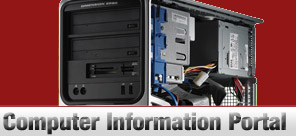

|
|
|
||||
 |
|
 |
|||
|
Windows Media Center brings these three worlds of TV, radio and the internet together on one system. It is a high performance computer which allows you to send e-mail, browse the web, listen to music, play games, access movies or download them at your will. With the many computer tools available for online chatting, sending and receiving phone calls, etc, we can have a virtual triple play system right in our home! While we send emails or surf on the web, the PC could be recording hundreds of Giga bytes of video on to hard disk or streaming movies to the different computers on the home network. The Media Center System is geared towards families who have home theater systems or people who would like to set up entertainment for home as well as for special occasions such as parties and other celebrations. Also, using the latest streaming technologies, a home user can broadcast streaming videos or music to friends and family across the world. Celebrations such as weddings, engagements, birthdays, children's festivities or religious gatherings can easily be shared with anyone who has the necessary equipment at the other end to receive it. Subscribers of satellite systems now have a set-top box for control TV for display and TiVo or a DVR for storing movies, etc. The Windows Media Center system incorporates all of these devices into the computer. Many of the high performance CPUs available on the market along with the Windows Vista or Windows XP Operating system may also be easily adapted to perform as a home Media Center. The hardware that you need for a Media Center configuration is summarized in this chart:
Steps to configure a home Media Center network):
An additional piece of equipment optionally required is the "Windows Media Center Extender" which can be connected to the network. This device helps us to multitask with the Media Center computer by allowing other users in the home record TV on one computer, watch it on another while the Media Center computer is performing other tasks. An Xbox 360 may be uses as a Media Center Extender. Also, there are TVs and DVD players available on the market that has Media Center Extender functionality built into it. The success of the Media Center Experience also depends on the resources available on your computer system such as a high performance processor, large memory, optimized graphics capabilities as well as availability multiple card slots and USB ports. Using the Media Center Extender, several home users can simultaneously:
Although analog TV systems are getting obsolete, the Windows Media Center is compatible with a number of analog TV signals such as NTSC, PAL, and SECAM. The Media center supports digital signals such as ATSC (Advanced Television Systems Committee), QAM (Quadrature Amplitude Modulation), ISDB-T (Integrated Services Digital Broadcasting), DVB-T (Digital Video Broadcasting), and DVB-S. These signals may be received over the air by using an antenna or via a satellite system. Satellite TV system transmits the signal to an orbiting satellite that receives the signal, amplifies it, and then transmits it back to earth. These signals are in digital format and are usually encrypted. Windows Media Center supports DTH (direct-to-home) satellite content through the TV provider's set-top box. Here are some instructions on how to use the Remote Control or Keyboard to use the Media Center. How to watch live TV
Setting up your Guide listings
Listen to Music
For people who have problems with hearing or vision, Windows Media Center has certain features that may resolve these issues: Narrator is a text-to-speech utility in Windows Vista which can be used by blind or people who have impaired vision. This application reads the contents on the screen, menus or the any text that was typed. Screen Magnifier displays a magnified portion of the screen in a separate window so that users who have impaired vision can read the text easily. Descriptive Video Service provides users with additional information about the pictures on the screen. Captions and subtitles can also be turned ON for most programs. The Windows Media Center also allows us to create DVDs or CDs, listen to them, rip music from CD, use parental controls on TV channels or timings, listen to the radio, edit photos and play games. The disadvantages of such a system is the same as that for computers; they are easy to mess up. So they may need restarts, installation of corrupted applications, disk cleanups, virus cleanups, etc. Overall, the Windows Media Center is an idea whose time has come. Since most computers that are on the market can handle some or all of the applications described above, it will certainly benefit the home users to set up their systems as Media Centers and save money on numerous assorted electronics devices. As flat panel displays get larger and computers get smaller, we should be able to replace the TV, the DVD Player, the Boom boxes and other electronics with one wall display in each room that will serve as the Multimedia Entertainment Center which provides centralized video, audio or other information on demand.
|
|
|||||||||||||||||||||||||||||||||||||||||||||||||||||||||||||||||||||||||||||||||||||||||
| Home l Help l Privacy Policy l User Agreement l About Us l Contact Us l Link to Us |